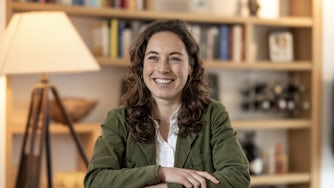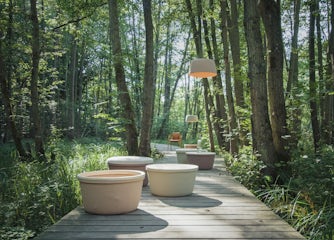Milan is the centre of the design universe (again)
With machine learning exhibitions, anti-smartphone throwbacks, and a giant brutalist orange lavatory, Milan Design Week is always one of the most sought-after tickets on the cultural calendar. Designs first seen on these well-trodden streets inevitably filter down into your homes, wardrobes, and, yes, even cars. As any good creative will tell you, if you want to see what’s coming next in the world of design, you must first start in Milan. We join Nargess Banks for this year’s must-see attractions at Salone del Mobile and Fuorisalone.
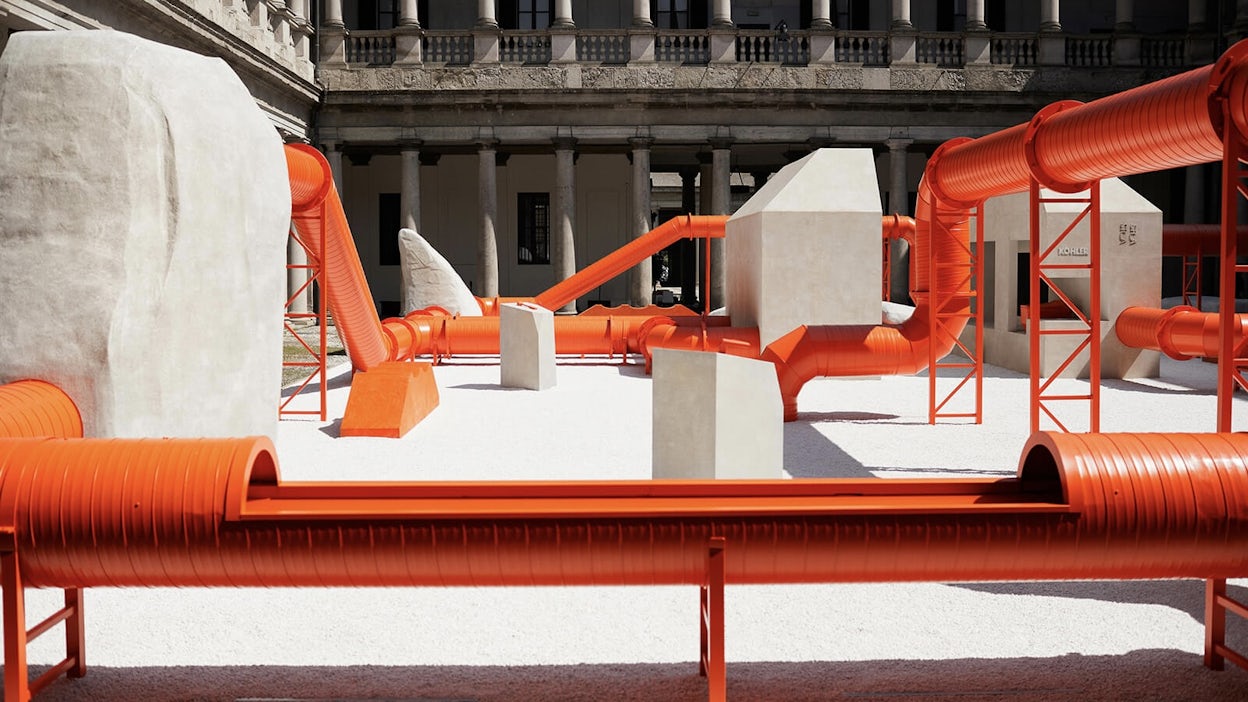
No other city can stage a design fair quite like Milan. The annual Milan Design Week attracts vast crowds from the creative industries around the world, who gather here for a week of exhibitions, talks, and networking. With few other cultural events on the calendar offering quite the same reach, this is one of the must-attend gatherings of the year. After all, design, style, and the art of living, are embedded into the fabric of Italy’s second city, where tradition and modernity blend so effortlessly. Here, themes explored during Milan Design Week help form a compass for the global design industry.
This year, material language was visible throughout the shows at the Salone del Mobile trade fair in the Rho Fiera fairground and across the various galleries, boutiques, palazzos, and universities that take part in Fuorisalone. Many designers looked to the innovative use of recycled, reclaimed, and repurposed elements, while others took the classics – stone and marble – to their contemporary edge. Installations explored the synergy between technology and craft, seamlessly merging the past with the future. Attendees were treated to a few playful exhibits too – installations involving traditional materials and forms reimagined through whimsical, surrealist lenses to ignite the imagination. Together, they formed an exciting conversation around the possibilities of materials in progressing design, with a strong environmental and social cord running throughout.
Reimagining waste
Within the historic walls of Teatro Gerolamo, renowned research-based design studio Formafantasma challenged us to look beyond mere aesthetics in design by turning our gaze towards ethical production and processes. The Earthic installation literally turned waste into luxury.
When creating this piece, Formafantasma utilised production debris from a luxury surface manufacturer. The resin oil had been recovered from cooking, while the white fragments on the surfaces, the aesthetic parts, were composed of recycled glass and PET. Meanwhile, the colour palette – a restrained and sober combination of greys and dark green – was chosen because it required less resin than lighter and brighter shades.
“We see this as the future of surface design,” Formafantasma founders, Italian designers Andrea Trimarchi and Simone Farresin told me at the show. “It’s not about luxury; it’s about the world we live in. We can no longer only look at aesthetics but need to understand the importance of how things are made. Our collaboration is exactly this – an attempt to design a product from the inside out where the aesthetic choices also correspond to ethical and sustainable choices. Decision-making from this perspective is what is relevant for design today at large.”
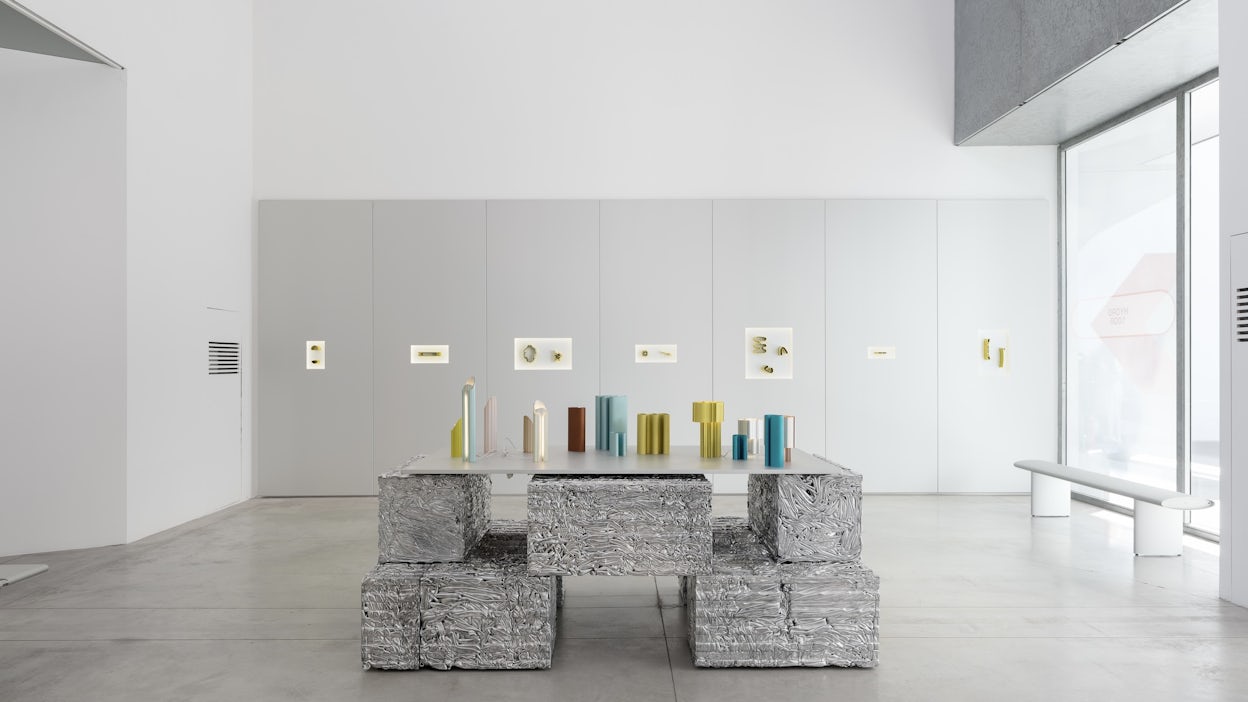
Classic forms
In a dialogue with history – perhaps even as a reaction to our volatile times – many designers looked to solid, classic materials like stone and marble for comfort. Great examples in Milan were the Love Me Love Me Not collection by London-based designer Michael Anastassiades and Taula tables by Milan-based architect and designer Patricia Urquiola, which showed the potential of marble for creating designs that are delicate, elegant and at once timeless and contemporary.
A material well-known to car designers was also on display in Milan. Versatile, light, and reusable, aluminium will be used to manufacture Polestar 5. Here, it was used for something altogether different. New York-based designer Nao Tamura took inspiration from the kimono for her Origata console, which was made from a single sheet of aluminium, cut and assembled using screws to maximise the use of material. Elsewhere, Norwegian designer Lars Beller Fjetland’s curated 100R exhibition saw a collection of design objects by Max Lamb, Inga Sempé, Philippe Malouin, Shane Schneck, John Tree, Rachel Griffin and Andreas Engesvi, made from Hydro Circal 100R, an industrial-scale aluminium product made of post-consumer scrap.
High-tech/low-tech
In complete contrast, French designer Philippe Starck, who has long been exploring the possibilities of machine learning in design and production, showed his latest ideas made in partnership with artificial intelligence. In Milan, working with an Italian furniture maker, Starck showed A.I. Lounge and A.I. Console which use recycled plastic and are conceived with the help of artificial intelligence for an interesting dialogue on materials and production.
Meanwhile, a famed drinks brand and fashion house exhibited The Boring Phone. As the name suggests, this anti-smartphone is a simple device to encourage children and young adults to disconnect from technology. Produced by a Finnish mobile phone manufacturer, the design is informed by Newtro culture, modernised retro aesthetics, and a touch of obvious nostalgia for the early 2000s with its flip feature, monochromatic sub-screen, and transparent casing covered in stickers. The phone features a 0.3-megapixel camera, FM radio, a snake game and, of course, offers no internet access or social media.
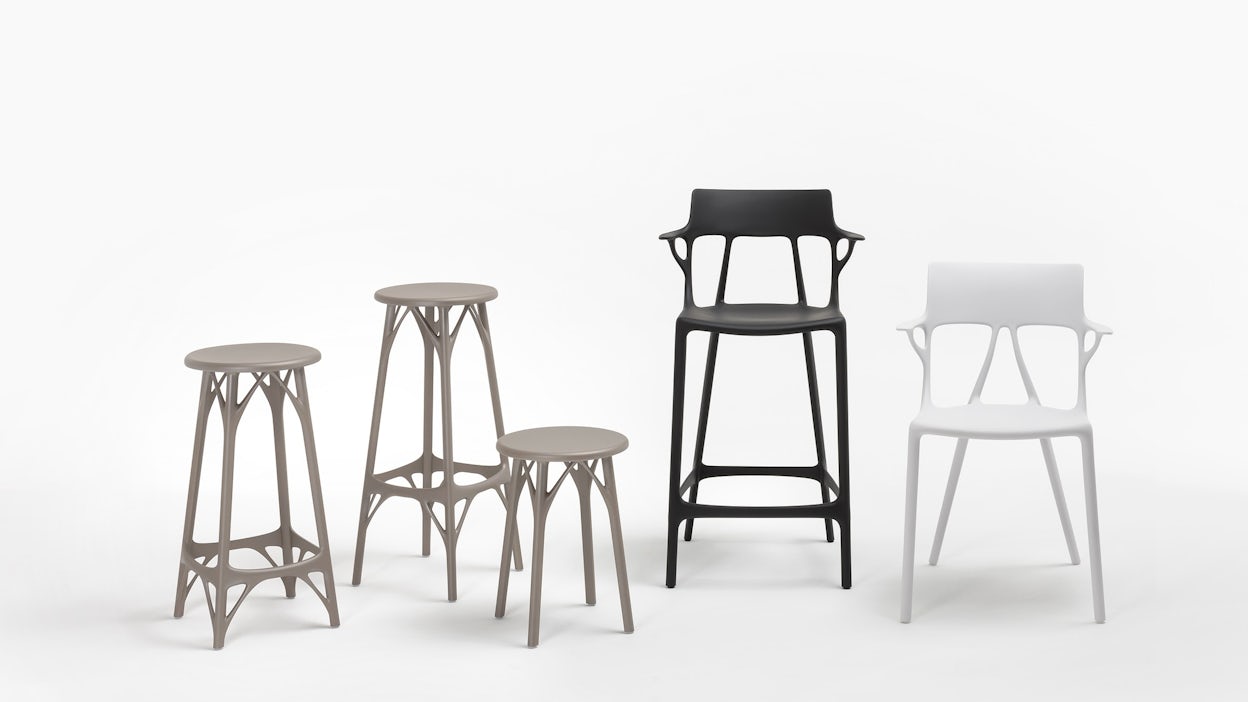
Odd coupling and surrealist moments
Milan is not averse to injecting a little fun into design. There were surrealist moments to be had throughout the week where materials were not quite what they seemed. Hard-surfaced metallic pillow-looking sculptures begged you to sit and rest, while glossy leather furniture played with our notion of the material, with luxury and taste. Also injecting a sense of fun and play, Swiss-born American designer Yves Béhar’s Peaks is a modular sofa composed of dual triangles interconnected by fabric hinges, which allows them to rotate up or down to create multiple seating arrangements.
Standing out for its bold colour statement and monumental scale, Samuel Ross’s Terminal 02 put the surrealist lens on the humble toilet. The cutting-edge London artist and designer constructed a maze-like brutalist installation at Palazzo del Senato featuring a giant orange lavatory and twisting industrial pipes to mark the launch of his first product, Formation 02, for a famed bathroom brand. The imaginative smart toilet, rendered in bright orange, boasts an asymmetric shape that recalls edgy brutalist architecture. The shell surrounding its porcelain bowl is constructed with composite resin, with unexpected cut-outs and evoking, textured natural rock for an inspired fusion of functional and playful and with an eye on the environment.
Formafantasma summarised the mood in Milan well. “Very often we talk about quality in production, which is about the performance of the product, and we talk about the aesthetic, but rarely we talk about the decision-making behind how they are made. What we hope people will take away is understanding the reality of the product, its components, and that design is not only about aesthetics but also about how things are produced.” We couldn’t agree more.
Words by: Nargess Banks
Salone del Mobile and Fuorisalone at Milan Design Week, ran from 15 to 21 April 2024, at Rho Fiera fairground and across Milan, Italy.

